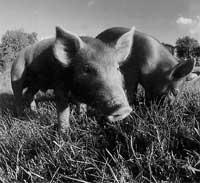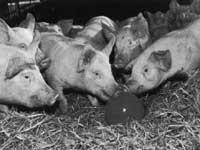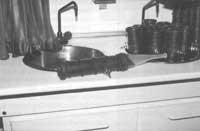Frozen piglets
1998/06/01 Elhuyar Zientzia Iturria: Elhuyar aldizkaria
Those responsible for the farms will be able to freeze and store the embryos of the pig. Then, when desired or needed, it will be applied to the stomach for full development. This technique has been used for years with cows, since the mid-1980s began to work in this way with cows and has now become a used, cheap and comfortable technique.

However, in pigs this technique could not be used. John Dobrinsky is a physiological animal that has managed to exercise also in pigs. When cow embryos are frozen, the freezing process is performed relatively slowly, resulting in the formation of crystals in the embryo and its vicinity. These crystals kill cells and kill 15-20% of embryo cells. Despite this damage, the cattle embryo advances, but not that of the pig.
Therefore, all Dobrinsky sessions have focused on accelerating the freezing process. For this purpose he has used a technique called vitrification, which with liquid nitrogen freezes to -196 °C. Freezing is very fast, so no crystals are formed in the embryo. However, these embryos were not viable.
The reason was that the microfilaments that maintain the structure of the cell membrane were damaged, so the cells deformed and did not perform their functions correctly.
But the researcher has also found remedy for this problem and, before freezing the embryos, uses a chemical called cytoalasine to prevent cell damage. In this way, 80% of frozen pork embryos have become viable, a proportion that, in his opinion, would be marketable.

Gai honi buruzko eduki gehiago
Elhuyarrek garatutako teknologia






